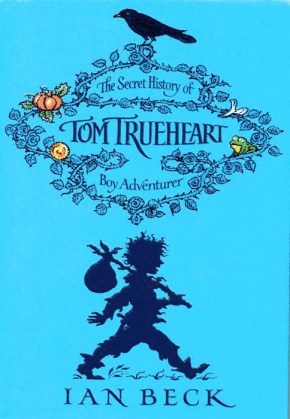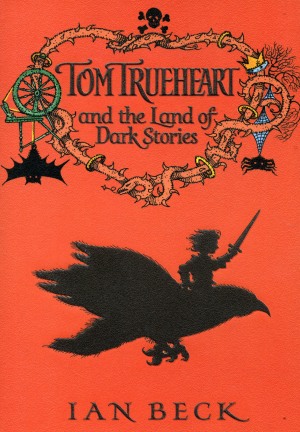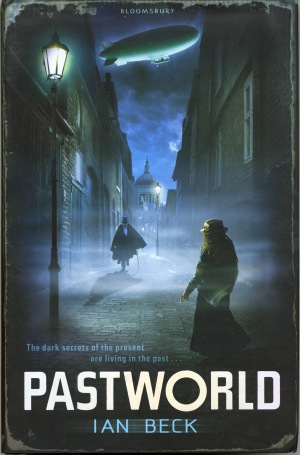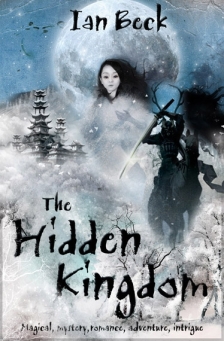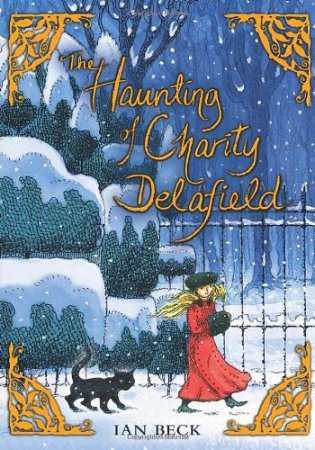Reviews and articles
Grey Island Red Boat by Ian Beck
A Little Gem by name (from Barrington Stoke’s Early Reader series) and a little gem by nature, Ian Beck writes a story that makes you want to sink back into a comfortable chair and be sailed away into the magic. He tells a modern day fairy tale with his own illustrations punctuating the text, and has dedicated it to his grandson. It’s exactly the tale you would imagine a grandparent telling a grandchild.
A princess lives with her father, the King, on the Island of Ashes. As the reader may expect from the name, everything on the island is grey. The sea, the sky, the land. The black and white illustrations convey this too. It rains all the time, and the month is always November. The princess feels that something is missing, and the tone of the text is muted, sad and withdrawn.
Then one day a small boat washes up on the island – and there’s something different about it. It’s red. Before long the stranger aboard has disembarked and is colouring the world with every touch of his hand. Some people are bewitched by this – the Princess and others feel “tickled” by it. But the King fears change, and takes action to prevent it, although change proves inevitable.
Ian Beck brilliantly captures the rhythm of a fairy tale or legend, as well as an underlying depth beneath the simple story. Reading the book was like feeling a warmth spread across one’s body. Children will adore the gradual introduction of colour into the illustrated landscapes, and the perfectly easy descriptions of the feelings colour gives the people on the island. Adults will see the depth of the message.
From Minerva reviews 2016
THE DISAPPEARANCE OF TOM PILE,
by Ian Beck.
Reviewed by Saviour Pirotta
Title: The Disappearance of Tom Pile
Author: Ian Beck
Publisher: Random House/Corgi
Year: hb 2014/pb 2015
I have to admit that I’ve always been a big fan of Ian Beck’s work. His picture books have a pastel-hued retro quality that is very comforting and were always a hit with the kids I bought them for.
I also loved his Tom Trueheart novels, firmly based in a fairytale world that seemed reassuring in its familairity but innovative at the same time.
His latest series, called The Casebooks of Captain Holloway, is yet another facet of his ouevre. I’ve just finished the first installment, The Disappearance of Tom Pile, which I devoured in one long sitting. If Stephen King were to write a children’s book this would be it. It has all the ingredients of a bestseller and a resonance that will stay with readers long after they have finished the story. Here is a tight plot with engaging characters, set against a well-researched backdrop of World War II.
In 1900 a boy called Tom Pile is out poaching with a local miscreant. They shoot and wound a white stag, a rash action the boy regrets in an instant. He rushes to the wounded beast and seconds later, a dazzling light from the sky whisks him up into the air. He returns to earth what he thinks is a few moments later but is in fact 1940, right in the middle of World War II. In his pocket is a rectangular piece of metal unlike anything that has been manufactured anywhere on the planet…
I can’t reveal what happens next. Suffice to say that a whole list of diverse characters gets involved in the mystery. A corporal with ‘special’ powers, a charismatic captain who is also an investigator of paranormal phenomena, a German spy and a heroic Polish soldier. Or is the latter a secret spy for the nazis…?
The story is told in the first person by the corporal, a londoner called Jack Carmody, and includes files and transcripts in the style of King’s celebrated Carrie. The ending is incredible!
The book also includes a peek into the next adventure of Carmody, Holloway and Tom Pile. It’s called The Miraculous Return of Annick Garel. Can’t wait to get my mitts on it.
Saviour Pirotta
From The Sunday Times July 5th 2015 Summer Holiday Reads
___________________________________________________________________
THE SECRET HISTORY OF TOM TRUEHEART / Review by Amanda Craig
From The Times 2006
by Ian Beck
OUP, £7.99; 316pp
IT’S AN ODD THING, MEETING someone whose books have saturated your children’s infancy. All the way to leafy Twickenham to meet Ian Beck, I keep seeing the London suburbs as if they were drawn by his graceful, quirky pen. The blossoming cherry trees, the bridge over the Thames, the Georgian elegance of Richmond could all have come straight out of his classic book of nursery rhymes, The Oxford Nursery Book.
For more than 20 years Beck has been as much a part of the earliest memories of modern children as Kate Greenaway and Arthur Rackham were for grandparents and great-grandparents, with books such as Five Little Ducklings, Peter and the Wolf and The Nutcracker keeping traditional songs, games and stories alive.
You can have too much tradition, however, and now, at the age of 58, Beck has produced his first children’s novel, The Secret History of Tom Trueheart, Boy Adventurer. It’s the story of a 12-year-old boy who lives with his mother and six brave, bold and beefy brothers, all of whom are called Jack. Unlike the Jacks, Tom isn’t brave, but when they disappear on quests in the Land of Stories and get their adventures sabotaged, it’s up to young Tom to follow their footsteps and restore the proper endings to Sleeping Beauty, Cinderella, Rapunzel and so on. Post-modernism for kids has been a hit ever since the Ahlbergs’ picture book, Each Peach Pear Plum, but recently the Shrek films have made new fairytales hot stuff: not surprisingly, the Jim Henson Company is interested in the film rights.
Long ago, Beck was a successful commercial illustrator, who most famously did the cover for Elton John’s Good-bye Yellow Brick Road. He did magazine advertisements, record covers and even worked in the toy department of Harrods until the birth of his first child Ed, now 25, encouraged him to go into children’s books. “I thought, this is the nicest fun I’ve had for ages, and never went back.”
His first picture book, Round and Round the Garden, was published by the children’s editor David Fickling in 1982. Through Fickling, he also started a long and fruitful association with Philip Pullman, then as humble an author as Beck was an illustrator. Two more children and 63 picture books later, Beck has sold more than a million copies worldwide, with his version of traditional nursery rhymes, The Oxford Nursery Book, being the most successful children’s book published by Oxford University Press. He did not think of writing a novel of his own, however, until he shared a taxi two years ago with a fellow-illustrator, Sally Gardner. Each encouraged the other to try to write a full-length novel, and where Gardner produced the bestselling I, Coriander last year, Beck came up with an extended version of a story he originally began on the menu for a printers’ club dinner.
“I liked the name, Tom Trueheart; it was a good, sturdy fairytale name and I wanted to find out what happened to him,” he says. “I’ve done a lot of traditional fairytales for other authors, and once you get inside them you think, ‘Wouldn’t it be interesting if . . ?’. It grew like a little seed.”
What makes Beck’s work so fascinating is that, like Maurice Sendak, he understands that a picture book is not just about illustrating the words. In Five Little Ducks, for instance, the pictures accompanying the familiar song tell a story about how the fifth duckling silently tries to warn his siblings and mother about a fox: like Tom Trueheart, he eventually rescues them all and reunites the family. This form of double narrative, far from confusing two-year-olds, is so stimulating that you can see why he was Philip Pullman’s perfect partner for books such as Puss In Boots.
“I save up the bits I want to draw in a story like a treat,” he says. “I somehow know what each scene should look like.” Edward Ardizzone, his hero, said that illustrations should be drawn from memory, and distilled into an essence; it is this surreal purity of vision that makes Beck’s pictures so pleasing, and so archetypal. Every hill is round as a dumpling; the Moon always has a face or a cow jumping over it; the children are equally at ease riding an enormous sheep or quietly reading in a tiny walled garden. It is an idyllic nursery world whose shadows, thorns and clouds are purely decorative, and whose nostalgia never curdles into sentimentality. Yet he is also capable of much darker, more sophisticated drawing, as his work with Pullman shows. A new version of His Dark Materials has just been published by Scholastic with additional endpapers by Beck.
“It’s delightful to be associated with anything like that,” he says. “Philip is an artist himself and takes a keen interest in how the speech bubbles and pictures work around the words. We both like variations on a known theme. Stories go so deep, they are so well-known that they seem as if they’re set like cement, but as soon as you twist them round, they become playful.”
Children’s books are a lifelong passion for him — he collected those illustrated by Dulac and Rackham as a student at Brighton College of Art, where he shared a flat with Pullman’s other illustrator, Peter Bailey, and was taught by Raymond Briggs. Part of a generation of exceptional British illustrators, he is an immensely likeable man, who is as happy to talk of the Shinto philosophy behind the anime films of Studio Ghibli as his own work.
Even as we discuss our mutual admiration for the Japanese director Miyazaki, a lovely new picture book, Winston the Book Wolf, arrives from Bloomsbury. Also, he has just finished a special exhibition of his work in the psychiatric ward of the Chelsea and WestminsterHospital. His sudden burst of productivity is caused by the recent death of two close friends.
“It took me a long time — 20 years of learning in public — to work out what I was best at doing and I’d always written things in a frustrated kind of way; but after my friends died suddenly I realised I’d better get a move on.”
Tom Trueheart, which looks likely to become one of the hits of 2006, now has a sequel, In the Land of Dark Stories, which promises to be even more exciting because the rescued princesses can stop being passive and join Tom in the battle against the evil Ormerod and his sidekick Rumplestiltskin. It is all rollocking, rumbustious stuff, with plenty of jokes and a lot of input from Beck’s grown-up children. Ed, a film-maker, has directed a trailer for the website (www.tomtrueheart.com), largely shot in the garden of his old friend Nicola Bayley, where Beck’s 15-year-old daughter Lily is spotted as a princess. There’s no doubt our hero, a nice young lad with a toy wooden sword, will graduate to the big, beefy type (Beck’s other son, Lawrence) shown holding a real metal broadsword and preparing to tackle something nasty in the dark woods.
It is just right for children of 6-10, but at the same time you can’t help hoping that the earlier, innocent world of wooden swords won’t fade away completely.
___________________________________________
Tom Trueheart & The Land of Dark Stories
Reviewed by Amanda Craig
The Times
Fairytales have been plundered since Shakespeare’s day, but the past 100 years have moved on to the arch bowdlerisations of Disney and Shrek. This worries me. Smothering the stuff that’s so central to our imaginations in irony and knowingness doesn’t help children to puzzle out their essential meanings; one of the reasons that the recent film of Neil Gaiman’s Stardust was so utterly refreshing was that, like the Harry Potter series, it took fairytales seriously as the stuff of life, death and love.
Ian Beck’s Tom Trueheart came perilously close to post-modern knowingness but stayed true to traditional tropes, and the sequel, Tom Trueheart in the Land of Dark Stories, is even better. Tom is the youngest and smallest of seven brothers, all of whom are called variations of “Jack”. In the previous adventure, he helped them to rescue various fairytale princesses (Sleeping Beauty, Rapunzel, Cinderella etc.) and when the story begins, they are about to have a grand wedding, with Tom writhing in an uncomfortable satin pageboy suit. However, the villain Ormestone has other ideas and kidnaps both brides and brothers to his Land of Dark Stories. The brothers are sent off to work in his gold mines under the guard of Frankenstein’s monster, and the brides are subject to harassment from the love-struck Rumplestiltskin.
Tom, meanwhile, has been shrunk into Tom Thumb and has to find a way to rescue everyone despite his diminutive size. Luckily, he has had the wit to bring his father’s special sword and a piece of gold, so when his friend Jollity the crow gives him a lift he has the right weapons on his side.
Beck’s work has always enchanted younger children and his drawings of mop-haired heroes capture the captivating, carefree nature of 5 to 8-year- olds without making them twee. Here, the short, eventful chapters, lavishly illustrated with elegant silhouettes, will charm both young listeners and newly confident readers. Although I would have liked to see a princess other than Rapunzel pick up a weapon and fight back, there are plenty of jokes and cliffhangers. The Trueheart series has the same kind of thoughtfulness about storytelling that informs Cornelia Funke’s Inkheart and Philip Pullman’s Clockwork: when Tom makes his way to the inner chamber of Ormestone’s castle he finds his “father”, writing for dear life, and resembling Ian Beck himself in his benign surprise at having a “figment of my imagination” talk back. It would make a lovely anime cartoon; meanwhile, the book is a pleasure to hold, read aloud and explore.
___________________________________________
by Ian Beck
An intricate and wonderful murder tale, by this superb author. Cleverly merging the future and Victorian London.
By the author of the Tom Trueheart stories – darker, more involved and you won’t want to put it down…
Murder and mayhem abound!
A book to read around an autumn fire, or just curled in the corner as the night draws in.
Simply wonderful.
Read it!
Format: Hardback 368 pages
Date of publish: 05/10/2009
Publisher: Bloomsbury Publishing PLC
_____________________________________
I first saw this book mentioned by Carrie over at Carrie’s YA Bookshelf. It kept popping up on various blogs, so put my name on the list to borrow it from the library. Was well worth it, as I think it’s a very original story, with a twist I should have seen coming but didn’t!
One of the things that I enjoyed about the book is that each chapter is narrated by a different character. We have excerpts from Eve’s journal, then the next chapter might be from Caleb or Bible J or a policemen, then back to Eve. The different voices weren’t hard to keep track of, and I thought having several different viewpoints only enhanced the story.
Found the whole idea of turning an old section of London into a giant theme park for the rich remarkably believable, and thought Beck was able to keep the story moving along nicely even when switching from narrator to narrator. Don’t want to give away too much of the plot as there were a few nice surprises along the way, but I will say that I liked most of the characters and that the unlikable characters were all villains.
Gave this book a 4/5 rating. Thought the writing was very well done, the characters were all well developed, and the plot was original and compelling. I’ve seen a few comparisons to The Truman Show, but I didn’t think they were similar at all. I don’t think that this was too violent for a YA book, as video games are much more violent and bloody. All in all, I’d recommend this book!
________________________________________
Prince Osamu is a pampered, spoiled young orphan who has never known friends his own age or been told what to do. He spends his life surrounded by beauty and riches in a world where most people do not even dare to raise their eyes to his face, collecting the exquisite pots made by Master Masumi and writing poems. His tutors have told him about the demons of Hades which try, every few centuries, to break through the barrier and take over this world, and that it is his responsibility to repel them, but he dismisses all this as old wives’ tales. And then one night the forces of the Emissary attack the palace, and every certainty he had is gone in a flash.
At first he is more outraged than afraid. He is unwilling to get out of bed, but he is dragged out naked by Ayah, his old servant, and roughly pushed into his clothes. He whines and complains, refusing to move until he is told what is going on, and promising that he will have both Ayah and her daughter Lissa put to death for what they have done. Lissa’s only answer is to slap his face hard and tell him his life is now in her hands. He still tries to resist, but finds himself bundled into a sledge and covered in heaps of fur against the biting cold. Then the two of them set off across the snow as the palace is destroyed and everyone who lives there is slaughtered.
In the first part of the book we see Osamu’s complete inability to grasp what is happening, and his determination to cling to the rituals which have formed his life. He is utterly selfish, promising Lissa he will have her put to death for her insolence even as she kills the men who are trying to capture him, and he has no hesitation in making his disgust for her abundantly plain. And even when he begins to understand his plight, and his role in the coming battle, he still treats her like a servant, demanding after a long and exhausting flight through the snowy wastes that she draw him a bath.
‘The Hidden Kingdom’ is a thrilling tale, full of danger and near-escapes and the horror of war. But it is told in lyrical prose which suits the semi-mythical, oriental feel of the story, like the gorgeous cover art which manages to combine delicate beauty and foul war in a single image. Ian Beck himself is an artist by trade, and at key points in the narrative he chooses a single image which encapsulates the mood of the scene: the cherry blossom framed against the sky as the prince faces the Emissary in their life and death struggle, and the smell of cooked fish as the men of his army prepare their final meal before the battle. And the whole story is told against a backdrop of winds and snowstorms as cold as the hearts of those who seek to release the seven demons into this world.
The theme of the book is serious and dark, but it has a lighter side which only serves to highlight the importance of the struggle. Once the prince is adopted by a stray dog he learns the value of affection, and starts to respect the multitude of people who are willing to die to keep him safe. He even manages to show a little humility. Baku, the potter’s apprentice, is gauche and gawky, especially when he sees a pretty girl, but his courage is all the more striking because of it. And his master Masumi masks his kindness and concern for the boy beneath a nagging monologue about his stupidity and his tendency to drool.
This book has a timeless charm, with a feel of eternal verities about it, and the deceptive simplicity of its theme will move many a reader to tears towards the end. It has the potential to become a classic.
Many thanks to Oxford University Press for sending us this superb book.
___________________________________________
When Charity was just six months old, her mother disappeared – but Charity was always told she had died. As she approaches 13, having lived all her life isolated in a mansion with only her fierce, protective father and servants for company, Charity meets an old woman who gives her a clue to the secrets that lie down the dark corridors of the house.
So begins a tale of gothic mystery and discovery, with chimney sweeps, unicorns and a remarkable cat….
This has all the ingredients of an enthralling adventure – a lonely child, a missing parent, a series of clues and a surprisingly satisfying twist of an ending. Age 10+ Daily Mail
___________________
Ian Beck’s The Haunting of Charity Delafield features another lonely young girl growing up in a haunted mansion, around a hundred years ago. Forbidden to speak to strangers, explore her own home or even read fairytales she will of course do all three, defying her medical “condition” which must not be exacerbated by excitement.
Yet Charity is haunted by a persistent dream about a long corridor, and a message which she must read. Aided by her adorable black cat Mr Tompkins, she keeps her secret knowledge to herself, but soon discovers that the mother who mysteriously vanished twelve years ago may not be dead after all. Small acts of kindness stack up against repression and convention, and soon Charity is on a dangerous quest which must be completed before her thirteenth birthday. Like Amaryllis, she is helped by a boy, Silas, of humbler birth, and like Amaryllis she has not been told the truth about her past.
Both authors create a gloriously Gothic atmosphere of suspense heightened, perhaps, by their complimentary careers as illustrators. You feel you can see the warm, friendly below-stairs life contrasted with the cold, over-protective “privilege” imposed on our heroines. Each is a defence of sympathetic imagination. Beck’s book is exquisitely produced, and a delight to hold; this would make a perfect present for a dreamy child of 9+, just as Gardner’s The Double Shadow would for 13+. Gardiner and Beck prove, triumphantly, that there are better books out there than the endless Twilight rip-offs pumped out for young girls. Like their heroines, we just have to find what is beautiful, and true.
The Times, November 2011




